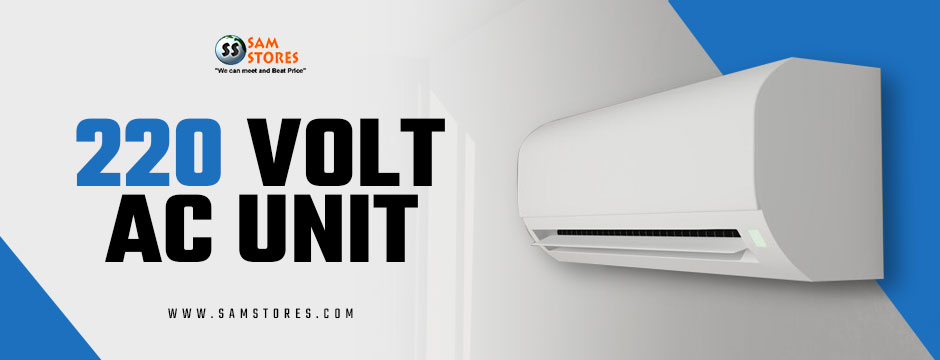In the realm of cooling systems, the Seasonal Energy Efficiency Ratio (SEER) rating serves as a crucial metric to gauge the energy efficiency of air conditioning units. For those seeking optimal performance and cost savings, understanding SEER ratings is paramount, especially when selecting a 220 volt AC unit. In this comprehensive guide, we’ll delve into the intricacies of SEER ratings, their significance, and how to choose the most efficient 220-volt AC unit for your needs.
What is a SEER Rating?
A SEER rating, or Seasonal Energy Efficiency Ratio, is a metric used to assess an air conditioner’s efficiency throughout a cooling season. It measures the ratio of the cooling output of an AC unit to the energy it consumes in watt-hours. Essentially, a higher SEER rating signifies greater efficiency, as the unit cools your space while consuming less energy.
Understanding SEER ratings is crucial for several reasons:
- Cost Savings: AC units with higher SEER ratings generally lead to lower energy bills over time. While they may have a higher upfront cost, investing in a unit with a higher SEER rating can result in significant long-term savings on energy expenses.
- Environmental Impact: Energy-efficient appliances, including AC units with higher SEER ratings, play a vital role in reducing carbon emissions and environmental footprint. By choosing a higher SEER-rated AC unit, you not only save money but also contribute to environmental conservation efforts.
- Comfort and Performance: Higher SEER-rated units often deliver superior cooling performance and maintain consistent indoor comfort levels, even in extreme heat. They can effectively regulate temperature and humidity, ensuring a more comfortable living or working environment during sweltering summers.
How to Choose an Efficient 220 Volt AC Unit
When selecting a 220 volt AC unit with optimal SEER ratings, consider the following factors:
- Determine Your Cooling Needs: Before delving into SEER ratings, it’s essential to understand your cooling requirements. Factors such as room size, insulation quality, local climate, and usage patterns play a crucial role in determining the appropriate cooling capacity for your space. Oversized units may lead to inefficiencies and increased energy consumption, while undersized units may struggle to adequately cool the area.
- Research SEER Ratings: SEER ratings serve as a key indicator of an AC unit’s energy efficiency. Familiarize yourself with SEER ratings and their significance. In the United States, the minimum SEER rating for new AC units is 13, but higher ratings, such as 16 or above, are recommended for superior efficiency and performance. Higher SEER-rated units may incur a higher initial cost but offer greater long-term energy savings.
- Compare SEER Ratings: When exploring 220-volt AC units, compare SEER ratings across different models. Look for units with higher SEER ratings within your budget range. Prioritize energy efficiency without compromising on performance. A higher SEER rating indicates better efficiency, resulting in lower energy consumption and operating costs over time.
- Consider Energy Efficiency Features: Beyond SEER ratings, consider additional energy-efficient features that can enhance the performance and savings of your AC unit. Features such as variable-speed compressors, programmable thermostats, and smart controls contribute to improved energy efficiency and comfort levels. Invest in features that align with your priorities and budget, keeping long-term energy savings in mind.
- Evaluate Total Cost of Ownership: While higher SEER-rated units may have a higher upfront cost, it’s essential to evaluate the total cost of ownership over the lifespan of the AC unit. Factor in not only initial purchase costs but also long-term energy savings, maintenance expenses, and potential rebates or incentives for energy-efficient appliances. A comprehensive cost analysis will help determine the most economical and sustainable choice for your cooling needs.
- Consult with HVAC Professionals: Seek guidance from HVAC professionals or certified technicians to assess your specific cooling requirements accurately. They can provide valuable insights and recommendations tailored to your space and preferences. By consulting with experts, you can gain a deeper understanding of SEER ratings and select a 220-volt AC unit that optimally balances efficiency, performance, and cost-effectiveness.
Conclusion
Understanding SEER ratings is essential for selecting an efficient 220 volt AC unit that meets your cooling requirements while minimizing energy consumption and costs. By considering factors such as SEER ratings, cooling capacity, energy-efficient features, and total cost of ownership, you can make a well-informed choice that ensures comfort, performance, and savings in the long run.
To sum it all up, prioritize energy efficiency when choosing a 220-volt AC unit, and let SEER ratings guide you towards a cooler, greener, and more cost-effective home environment.
